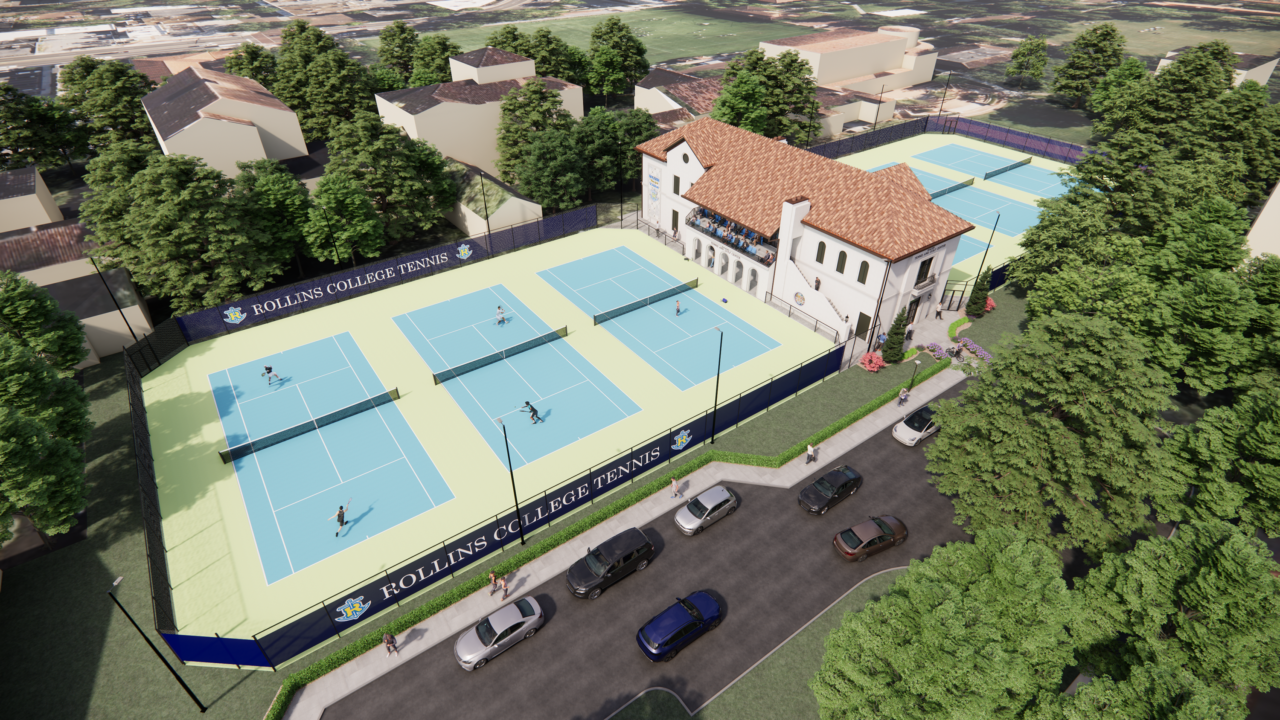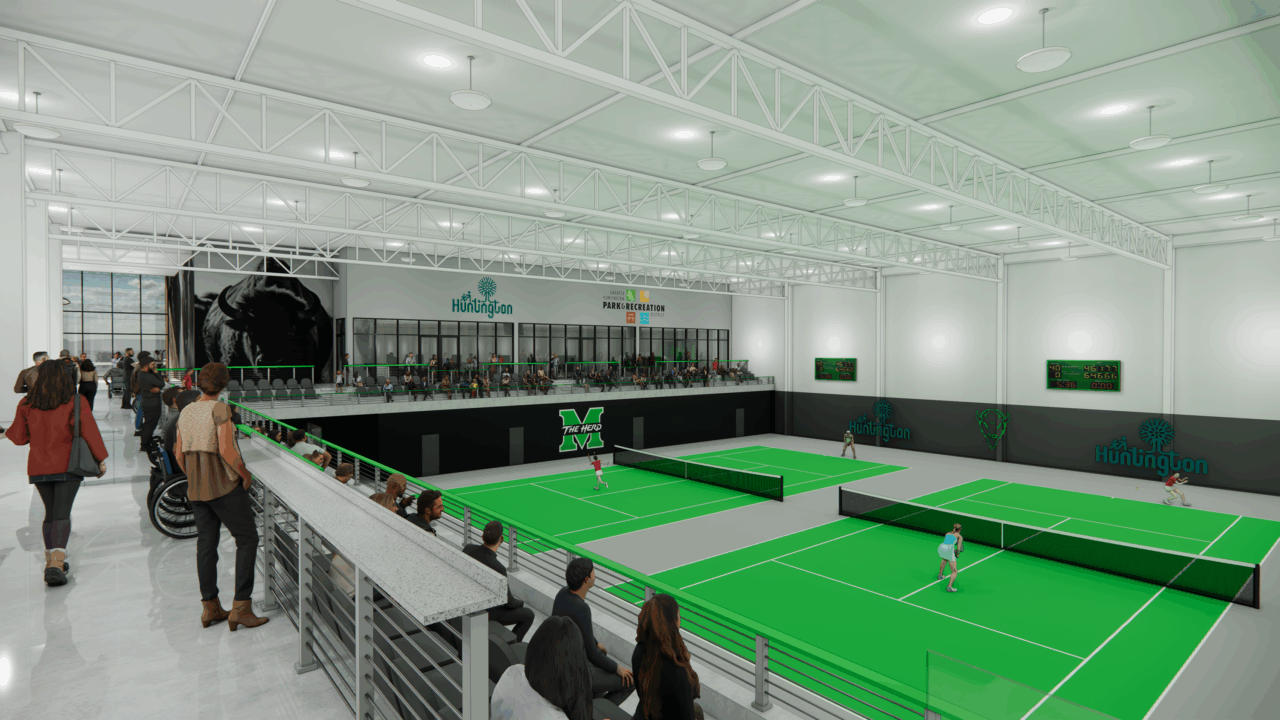Matchday Momentum: The New Playbook for College Tennis

It’s the No-Ad point. The match is tied 3-3. Everything is on the line. That’s where college tennis stands today, on the brink of irrelevance or reinvention. As the collegiate athletic landscape evolves rapidly in response to NIL reforms with an emphasis on revenue generation, college tennis faces a critical decision: adapt or become obsolete.
For decades, college tennis has primarily focused on player development, producing countless pros and world-class competitors. But the sport failed to evolve into a compelling spectator product. Without meaningful ticket sales, fan engagement, or media presence, college tennis has become an outlier among collegiate athletics. That era must end.
A Sport Without a Stage
Unlike football and basketball facilities, which were created for both player development and entertainment, college tennis has long lacked intentionality in venue design and event production. The primary mission was simple: build courts so players could play and coaches could coach. In most cases, there was no stage, no spotlight, and no plan to draw fans.
This is not just a missed opportunity, it’s also a liability. In 2025, there are no longer “non-revenue” collegiate sports. Programs that can’t generate revenue risk being downgraded to club status. Tennis, however, has a rare advantage, as the infrastructure can serve not only athletes and fans but also the greater campus and community. The right venue, designed for the college match, can transform tennis from a background activity into a featured event.
The Fan Factor
Fans are the heartbeat of any sport, and college tennis needs its fans now more than ever. Historically, the fan experience in tennis has been an afterthought. Seating is often too far from the action, facilities lack shade and shelter from the elements, food and beverage offerings are absent, and entertainment elements are minimal. This must change.
Tennis is inherently dramatic, with momentum swings, pressure points, and team dynamics. It should be a perfect live spectator sport, but it requires venues with intentional seating, comfortable viewing areas, intimate layouts that bring fans close to the court, and vibrant branding that brings school spirit to life. If we want donors to care and casual fans to show up, the match must feel like (and be) the event we know it can be.

Revenue in the Racket
Tennis courts have a unique versatility among collegiate sports facilities in that they can be utilized for other racquet sport events and play without damaging the court surface, enabling schools to expand programming, host more events, and increase rental income throughout the week. This multi-use capability maximizes facility value while also introducing new audiences to the sport. College tennis will not only be a community hub, but a revenue hub.
The rise of women’s sports has further proven that overlooked programs can thrive with the right platform. We’ve seen explosive growth in women’s basketball, volleyball, and softball as fan bases expand and brands invest. Men’s and women’s college tennis are perfectly positioned to ride this momentum. With a strong legacy, compelling match play, and a demographic eager to support it, college tennis can become a flagship sport if properly supported with facilities, marketing, and media attention.
The model becomes sustainable when adding in the potential for ticket sales (which remain untapped at all programs), concessions, branded merchandise, and hospitality events. College tennis is a valuable entertainment product. With smart investment in the venue and experience, programs can unlock new revenue streams and strengthen their position in the evolving NIL ecosystem.
The economics of a tennis venue are surprisingly compelling. An indoor facility on campus can generate substantial income through outside ticketed play. On average, this can yield $40,000 per court per year. A six-court indoor facility could produce $240,000 annually, offsetting operational costs and funding top recruits.
Designing the Experience
Today’s collegiate sports fans expect more than a match. They have come to expect an experience. That means rethinking every element of venue design and operations. Seating should be tiered, shaded, and close to the action to foster energy and connection. Hospitality areas such as VIP lounges, donor decks, and club-level spaces should be designed with intention and comfort. Food and beverage offerings need to rise to modern expectations, from chef-driven concessions to courtside drinks and match-day specials. Surrounding the competition space, social areas like outdoor lounges and branded fan zones help extend engagement before and after matches. And the experience should go beyond the tangible, with player meet-and-greets and immersive fan activations rounding out a holistic match-day atmosphere.
A college tennis facility should be more than a set of courts. It should be a community asset and a campus destination. And it should function year-round, not just on matchday.

Tech and Data for a Modern Matchday
Digital tools are changing how sports are consumed and experienced, and college tennis programs must take full advantage. Technologies like Electronic Line Calling (ELC) enhance credibility and reduce controversy, while streaming and broadcast capabilities bring matches to broader audiences with professional-level production. Data analytics tools deliver real-time insights for players, coaches, and fans alike, enriching the viewing experience. As ELC becomes the norm, it also unlocks new opportunities in sports gaming and wagering, an emerging market that can generate added interest and revenue. Meanwhile, digital ticketing and smarter scheduling can eliminate friction and make it easier for fans to attend matches. Aligning match times with peak viewing hours and building hype through promotion are essential steps in elevating the product. The tools exist. Now it is a matter of vision and execution.
Build the Matchday Movement
Collegiate tennis has the athletes, the tradition, the global credibility, and the brand recognition. What it needs are venues worthy of its potential and a matchday experience that invites fans to care, engage, and return. It is time to build venues, not just courts. It is time to create events, not just host matches. And it is time to attract fans, not just recruits.
The opportunity is here. The audience is ready. It’s matchday, every day.
*As seen in Athletic Business


About the Author
Bryan Fike, AIAMarket Leader—Racquet Sports Development
With over 13 years of experience and more than 75 completed projects spanning the sports and entertainment, parks and recreation, higher education, K-12, and federal sectors, Bryan brings a strategic vision to every project—creating innovative, functional spaces that promote active lifestyles and community engagement.
As LaBella’s Market Leader for Racquet Sports Development, Bryan focuses on indoor and outdoor recreational facilities. He is currently leading racquet sports projects across public, private, and collegiate sectors, including several mixed-use developments anchored by racquet sports.

About the Author
Virgil ChristianManaging Director, Absolute Padel and The Yardley Group
With over 20 years of experience in racquet sports venue design and funding, Virgil Christian has played a pivotal role in shaping world-class facilities. A former collegiate and professional tennis player and coach, he brings a unique perspective to venue development, ensuring top-tier experiences for players, coaches, owners, and fans.
As the United States Tennis Association’s (USTA) Senior Director of Facility Development and Collegiate Tennis for 15+ years, Virgil led the creation of the renowned USTA National Campus in Lake Nona, Florida, and contributed to the development of more than 2,000 racquet sports facilities, including the Billie Jean King National Tennis Center. A champion for enhancing spectator engagement, he helped drive innovations in live streaming and televised events like College MatchDay.
Recognized as Racquet Industry magazine’s “Tennis Person of the Year” in 2013, Virgil continues to shape the future of racquet sports venues worldwide. LaBella has formed a strategic partnership with Virgil, leveraging his experience across collegiate, public, and private markets to strengthen our team’s capabilities in racquet sports facility design and development.